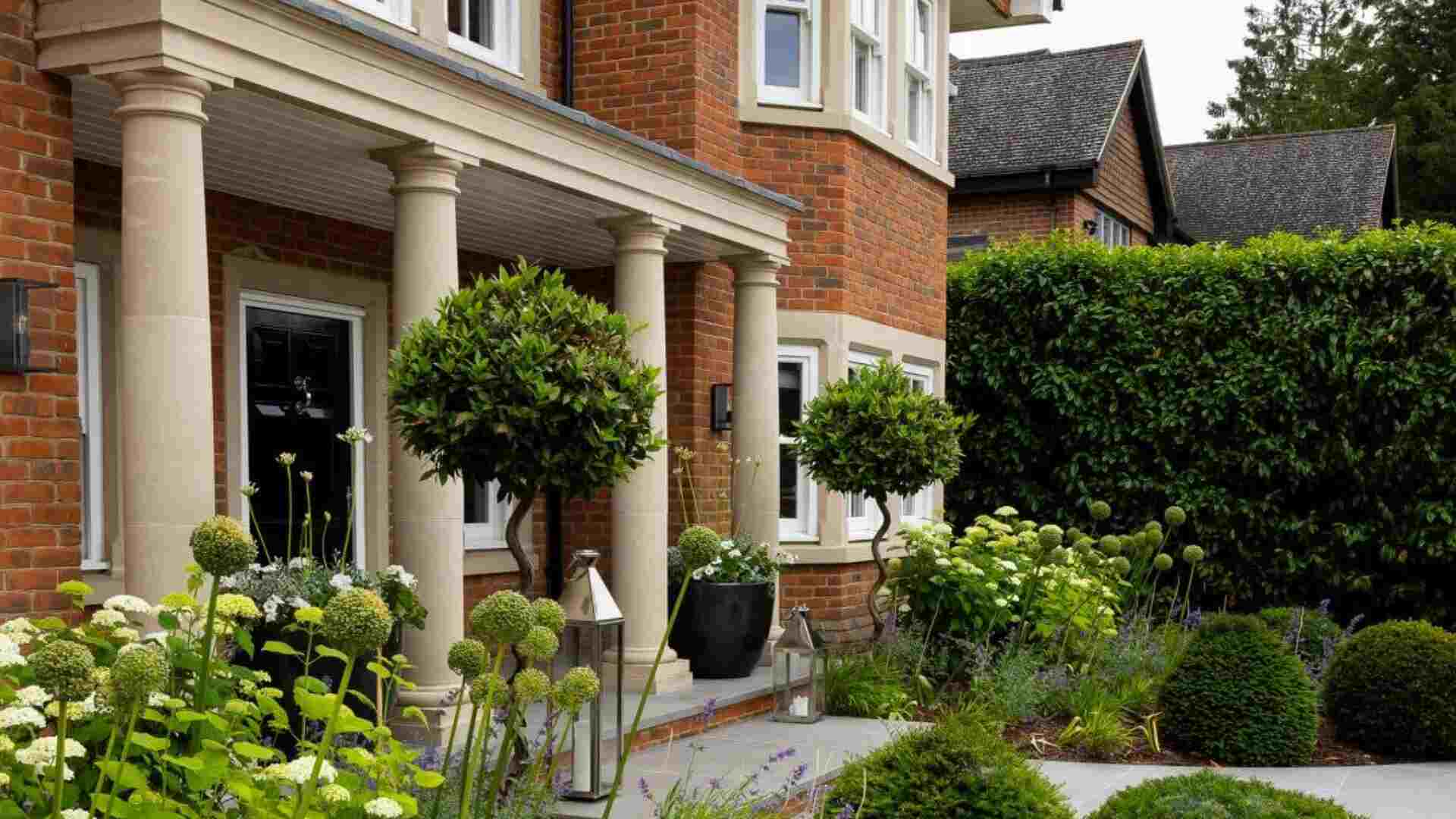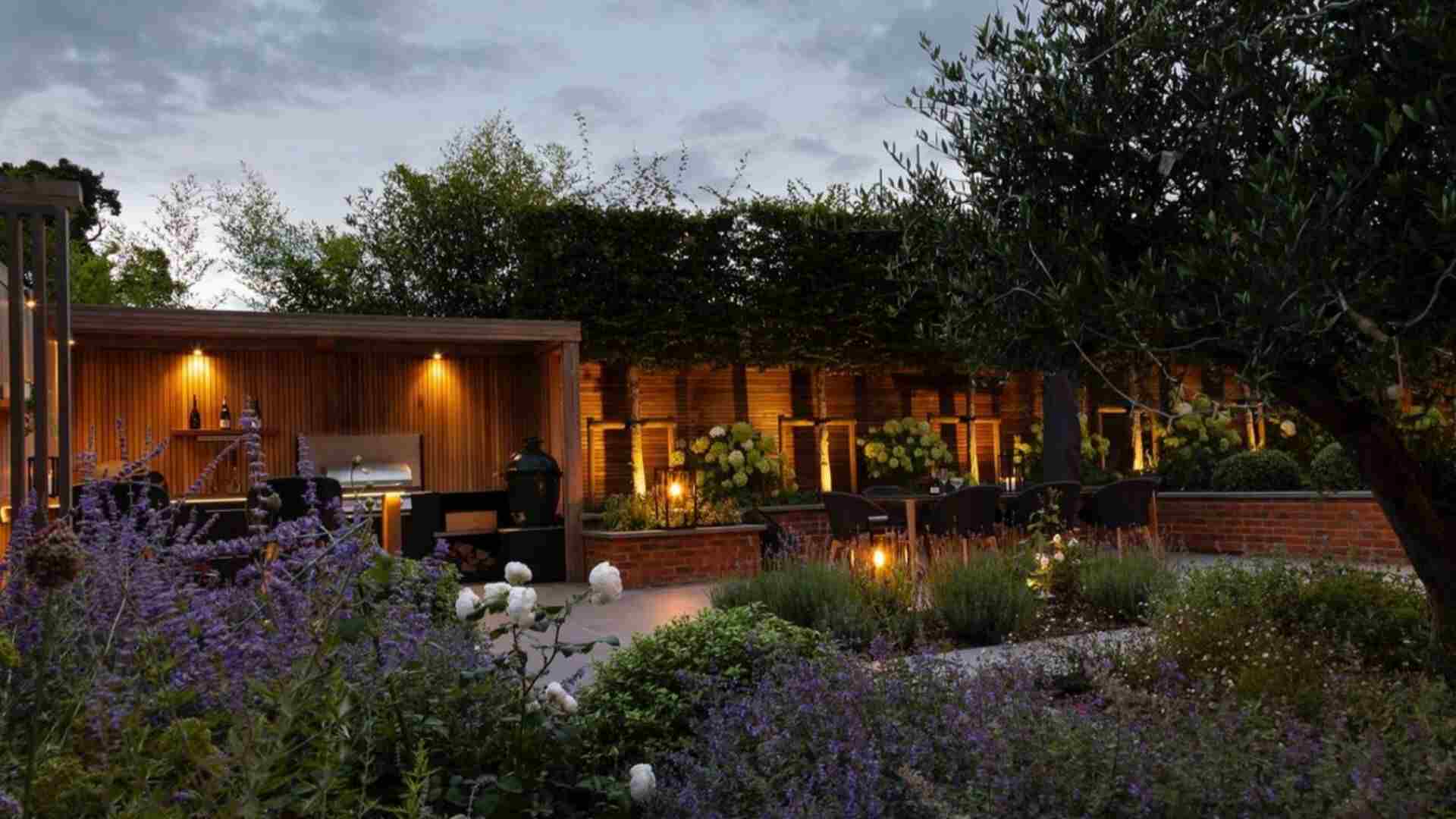Published on 14/05/2024 & Updated on 02/04/2025
With 4 in 5 UK gardeners noticing the impact of climate change on our gardens, more of us are turning to eco-friendly garden design ideas as a way to protect nature and the planet. While it’s estimated that the UK has already lost half its biodiversity, 35% of gardeners are actively encouraging wildlife in our outdoor spaces.
What Is an Eco-Friendly Garden?
An eco-friendly garden is part of the ecosystem, supporting local wildlife. Environmentally friendly garden design means acknowledging that we share our gardens with nature and doing what we can to make a positive environmental impact, from planting to water-saving features and recycled materials.
With 87% of homes having a garden, there’s so much potential to create pockets for nature on our doorsteps. As award-winning garden designers blending artistry, imagination and care for the environment into our gardens, we’ve created this guide to help you get started.
Here are seven eco-friendly garden design ideas:
- Choose natural and recycled materials
- Make your own compost
- Create vertical habitats
- Add water-saving features
- Plant for wildlife
- Plant a tree
1. Choose Natural and Recycled Materials
Landscaping in your garden provides structure for your planting plans. However, hard landscaping materials can have a particularly large carbon footprint, especially if you’re choosing manmade materials such as bricks or cement.
An eco friendly garden can still have paths and patios, but it’s best to keep these in small numbers. Opt for materials like natural stone, which was found to have a 74% lower Global Warming Potential compared to large ceramic tiles. Recycled materials, like reclaimed stone slabs, also work well to create outdoor space features.
Try to buy locally, as this reduces the large carbon footprint linked with transporting heavy materials. Using reclaimed or second-hand materials from salvage yards, or working with materials you already have in your garden are sustainable practices, as this lowers the carbon footprint and cost of purchasing new materials.
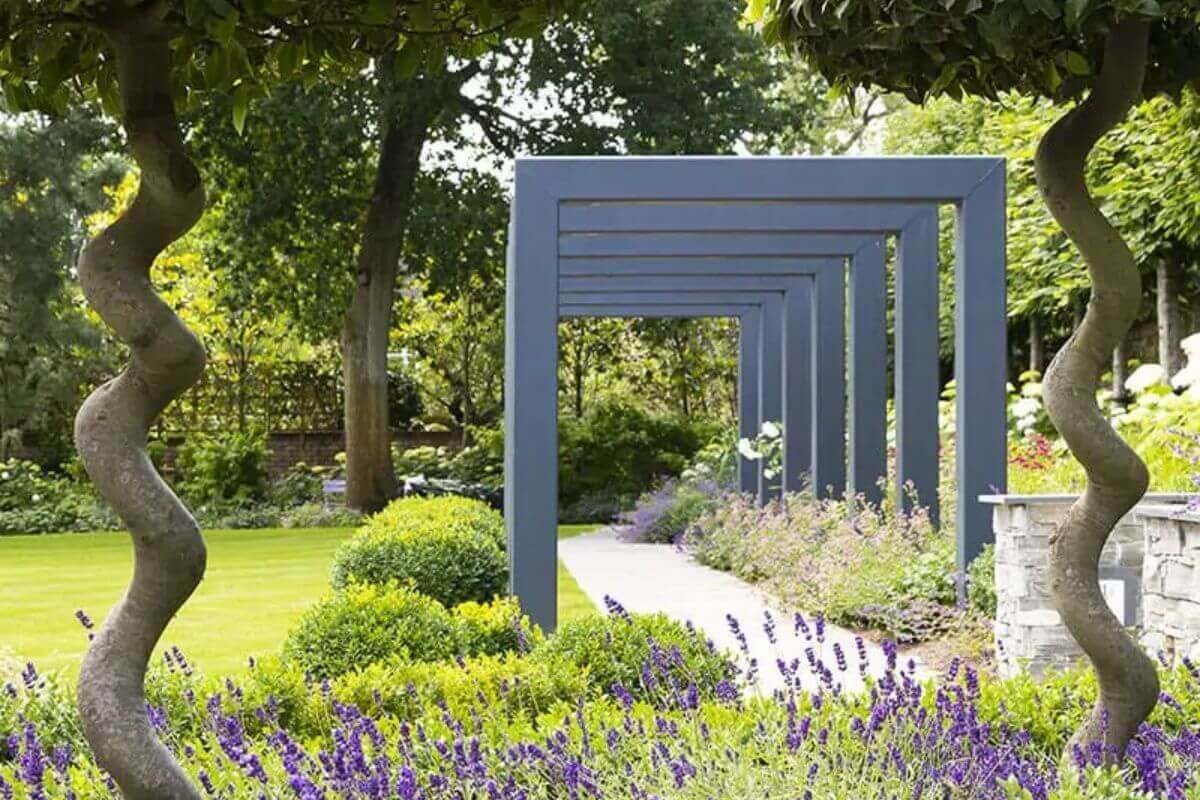
An eco-friendly garden can still have paths and patios, but it’s best to keep these in small numbers. Opt for recycled materials like natural stone, which was found to have a 74% lower Global Warming Potential compared to ceramic tiles.
2. Make Your Own Compost
Adding a compost space is a great addition to your sustainable garden design. Other than being free, compost gives you a low-maintenance outlet for household waste and saves you trips to local gardening stores. If you do end up buying compost at the start, make sure it’s peat free.
To add a compost space to your garden, find a shady area that has a water source close to it. You’ll need to create a compost bin from a durable material. Wood may be strong, but timber can rot as time goes on. Composite decking boards used for planters are good for compost bins, as they’re strong and won’t degrade easily.
Making compost is easy, as you can use a variety of organic green materials and household waste. Good examples include grass cuttings, old cardboard, foliage, or eggshells. Make sure that the contents are only 100% organic matter.
Never add contaminated substances, like diseased plant parts, pet waste, or pesticide-treated garden waste to your compost. You should also avoid adding food like oil, dairy, or meat, as this can draw pests to your garden.
How Long Does a Compost Pile Take?
On average, garden compost takes six months to two years until it’s ready to use, and the process will be faster in summer. You can help your compost along by stirring it occasionally. With 3 million tonnes of topsoil lost in the UK each year, regularly mulching your plants and adding compost is a small part you can play in restoring the health of our soil.
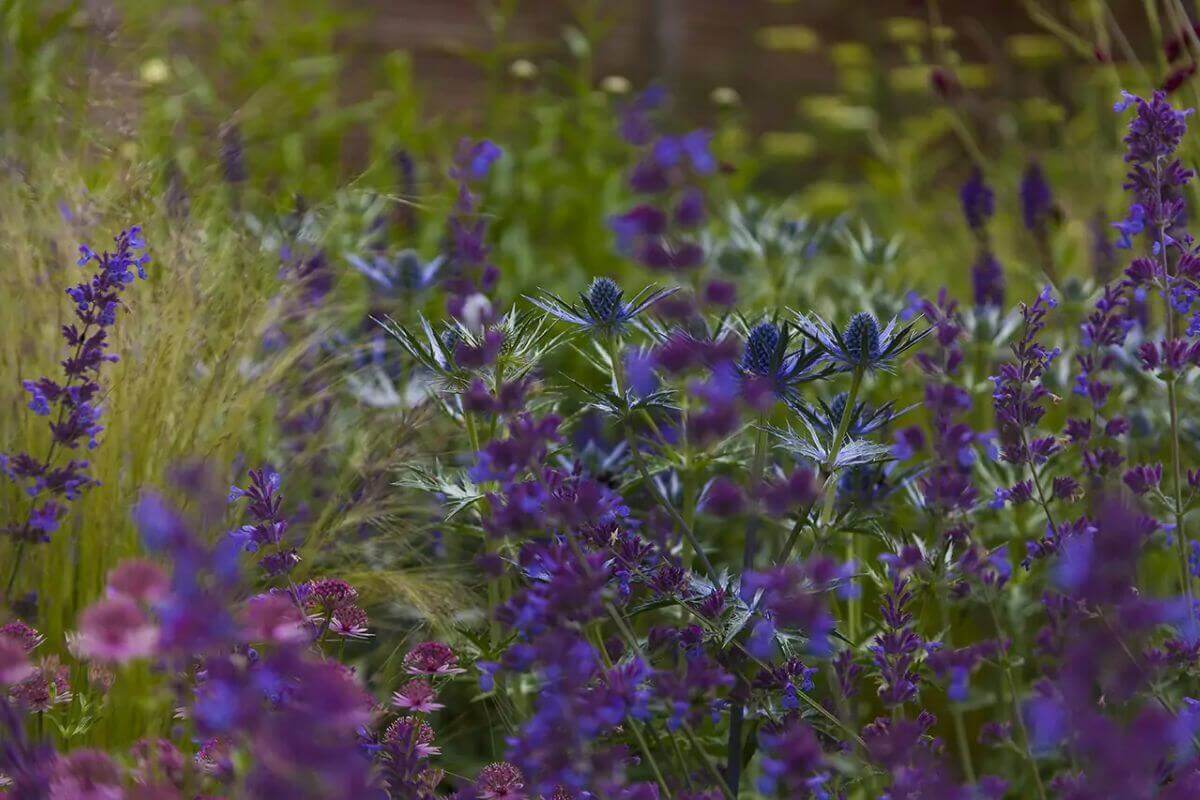
Composting is a low-maintenance garden idea that will help you improve the health of your soil.
3. Create Vertical Habitats
Whether you grow honeysuckle, ivy, clematis or garden peas, trellises create vertical habitats offering food and shelter to bees, butterflies and nesting birds. They’re also a brilliant way to make the most out of a small garden.
Garden trellises have latticed additions that give climbing plants support to grow, promoting better air circulation and vertical growth. Improved air circulation helps prevent plant disease, which means you won’t have to use harmful pesticides within your garden, making garden maintenance easier and allowing you to grow without pesticides.
Through using vertical space, a garden trellis allows you to add to your garden without modifying the land. This supports biodiversity and protects your current soil structure.
For creative designs for small gardens, or help with your planting plan, we can provide expert support. Book a free initial consultation here.
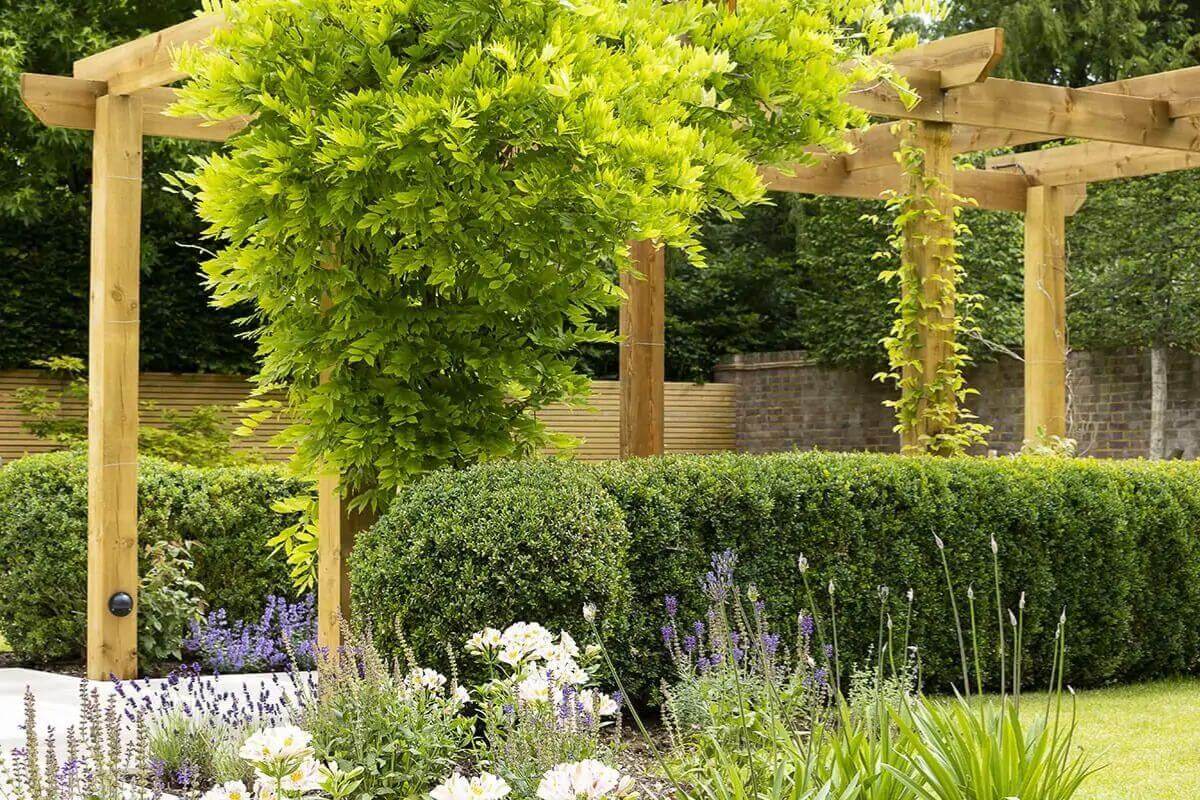
Environmentally friendly gardening with vertical trellises and arches allows you to create new habitats in your garden, while maximising space.
4. Add Water-Saving Features
Water is a precious resource, so it’s important to conserve water wherever possible. Eco-friendly gardens often have features that collect water. Large containers or water butts are ideal for collecting rainwater, which you can use to water plants, clean bikes, or top up shallow ponds later.
Other eco-friendly garden design features that save water are harvesting systems. These collect grey water, which is wastewater from household sources, like showers. This excludes contaminated water from toilets or dishwashers. Harvesting systems store grey water for reuse, so you can use it for non-drinking purposes.
If you’re considering adding a harvesting system to your sustainable garden design, check the costs associated with running the system. Systems like these can use lots of energy, which might invalidate their environmental benefits.

Eco-friendly gardens often have features that collect water. Large containers or water butts are ideal for collecting rainwater, while ponds create habitats for wildlife.
5. Plant for Wildlife
Here’s the fun part. Choosing plants for pollinators and other wildlife is one of the best ways to create an environmentally friendly garden. From umbellifers and spikes to dots and grasses, there are so many shapes and colours to choose from to create a cohesive planting plan for your space.
Figure out whether your garden is in a sunny or shaded location, as well as what type of soil you have. Is your soil dry, wet, sandy, or clay-like? Many plants prefer specific light and soil conditions. Work out what plants grow best in your local climate, then add them to your garden.
If you decide to remove a plant from your current garden, consider whether removing it will affect the wildlife that’s in your garden. If you plan on replacing it, will the new plant bring the same amount of wildlife to your space? If not, it’s probably best to leave it be.
Some plants take a few years to grow fully, but if you want to see instant results, look for flowers and shrubs that grow quickly. With any luck, you’ll notice pollinators like bees, birds, ladybirds, and insects around the space, which are signs of an eco-friendly garden!
Why Grow Your Own Flowers
Aside from colourful swathes of flowers being brilliant for our pollinators, growing your own flowers rather than buying them is a great way to minimise your carbon footprint. While you might not realise it, cut flowers can travel up to 6,000 miles in refrigerated aeroplane holds.
Besides, growing your own flowers is a wonderful chance to always have a fresh posy ready for the table from late spring through to early autumn. Here are some of our favourite flowers to grow:
- Sweet Peas (Lathyrus odoratus)
- Cornflowers (Centaurea cyanus)
- Cosmos (Cosmos bipinnatus)
- Zinnias
- Ammi Majus (Queen Anne’s Lace)
- Nigella (Love-in-a-Mist)
- Sunflowers (Helianthus annuus)
- Dahlias
- Rudbeckia
- Alchemilla mollis (Lady’s Mantle)
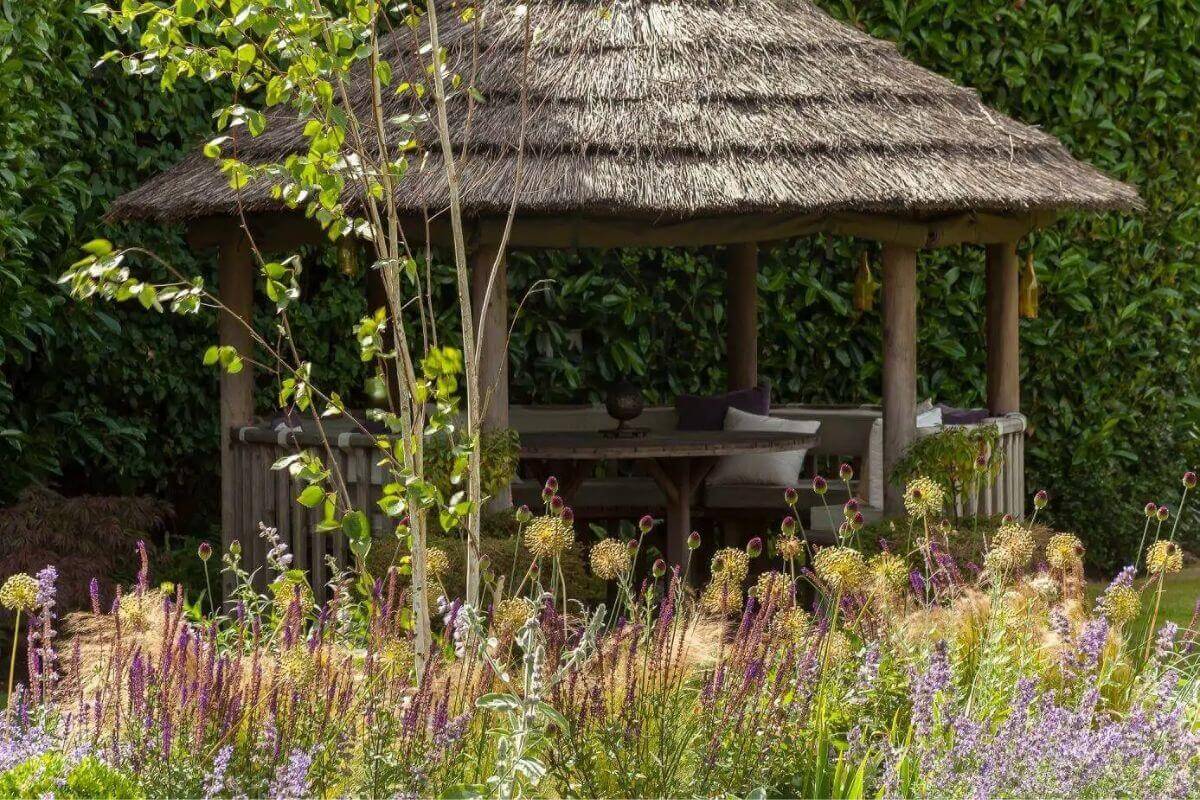
Growing your own flowers is great for pollinators and can help you reduce carbon emissions compared to buying cut flowers.
6. Plant a Tree
With the ability to absorb up to 150kg of carbon each year, we couldn’t not include planting a tree (or more!) to help mitigate the climate crisis and provide an essential habitat for birds and insects. While planting a tree can be challenging for compact gardens, you can opt for smaller trees or bushes instead. With medium or larger gardens, you have even more choice.
To really attract nature to your garden, we recommend choosing native trees. Oak trees, for example, can support up to 2,300 species with 326 species relying on this tree for their survival.
What Trees Are Good for Small Gardens?
Here are some of our favourite trees for small gardens:
- Hawthorn (Crataegus monogyna)
- Rowan (Sorbus aucuparia)
- Silver Birch (Betula pendula)
- Crab Apple (Malus sylvestris)
- Wild Cherry (Prunus avium)
- Spindle (Euonymus europaeus)
Ready to Design Your Eco-Friendly Garden?
We hope these six eco-friendly garden design ideas have left you inspired and thinking about what you can do to welcome nature into your outdoor space. Read our blog for more garden design ideas from six garden design mistakes to avoid and edible landscape design to how to prepare your garden for spring.
If you’re considering making changes to your garden and want professional help to create a unique and exquisite garden design, our award-winning designer Raine can help.
You can learn more about our garden design services here and see some of the gardens we’ve created. Whether you’re interested in commissioning a garden or a planting plan, book a free consultation with us to bring your ideas to life.
